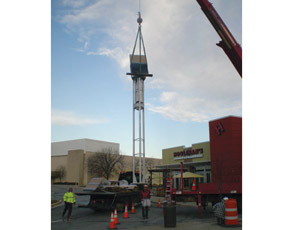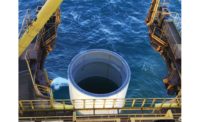In the middle of a cornfield in only one afternoon, Clay Warren’s company can install streetlights that are independent of any electrical grid, leaving behind nothing but tire tracks bathed in the glow of light-emitting diode (LED) lamps.


Interactive Energies is doing just that at the southwest entrance of the Castleton Square mall in Indianapolis, according to IE co-founder Warren. The Simon Property Group hired the firm, which was founded in 2009, to install its first lighting layout at the commercial development that was formerly a cornfield.
The lamps rely on the sun as their main power supply, but a vertical-axis wind turbine backs up the system. Engineers and architects always ask whether the power will last, says Warren.
“If we don’t do the engineering properly, then it could run out of power, so we adapt to location,” says Warren. “In Indiana, we have a 285-watt solar panel, and in Arizona we only need a 180-watt solar panel.”
Each installation is customized to its geographic location to ensure it never runs out of power.
Without sun or wind power, each unit’s battery can hold a five-day charge. The off-the-grid lighting system leaves minimal disturbance, Warren says. “All the installation entails is drilling a new pilot hole and a five-gallon bucket to hold the spillage from that hole,” he says.
For nature trails or locations where breaking ground or installing a permanent fixture goes against Leadership in Energy and Environmental Design (LEED) requirements, a small footprint and durability are important.
Warren claims the 15-ft poles can be installed flush to the asphalt surface within 15 minutes. Next, a worker in a boom truck pops in the lights. The fixture will be functioning before the crew leaves.
The poles use a helical anchoring system to avoid pouring concrete. If a customer wants the fixtures somewhere else a week later, they can be pulled up and moved.
“It’s all done with a corkscrew and a temporary connection,” says Warren. “It’s not permanent, at the owner’s choice.”
The connection is designed for long-term survival, though. Warren says these lights are very substantial, well engineered and will meet the highest level of code requirements.
The two working model lamps are designed to replace either a single 90- or 100-watt metal halide or two 100-watt metal halide lamps.
The company’s next project, scheduled for completion by the first quarter of next year, will illuminate the Indianapolis City County Building, says Warren.



Post a comment to this article
Report Abusive Comment